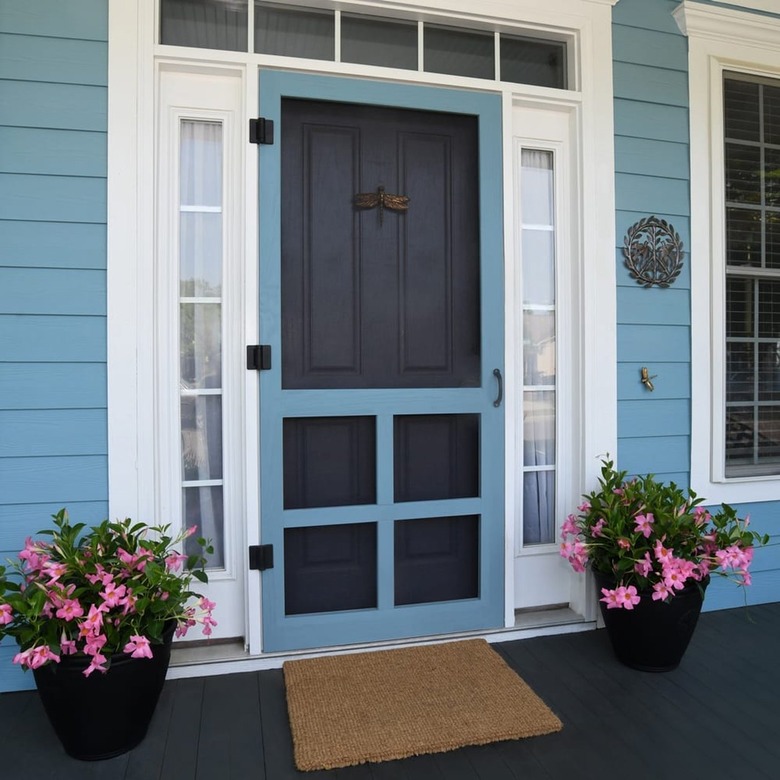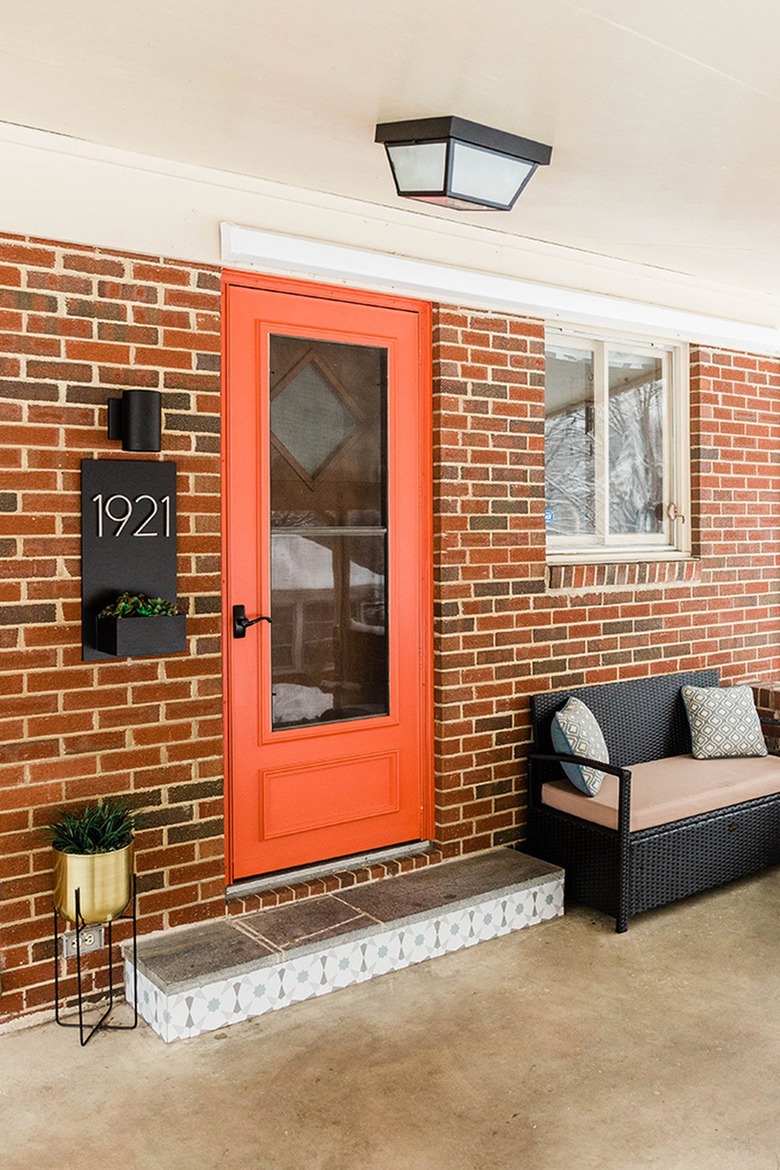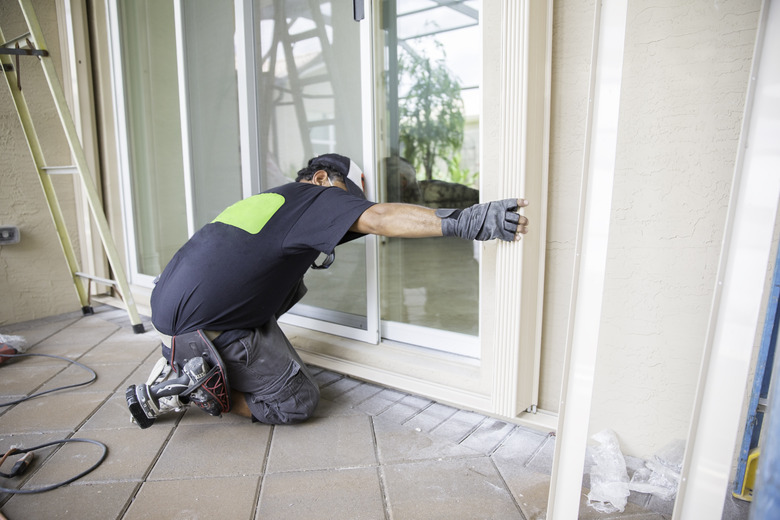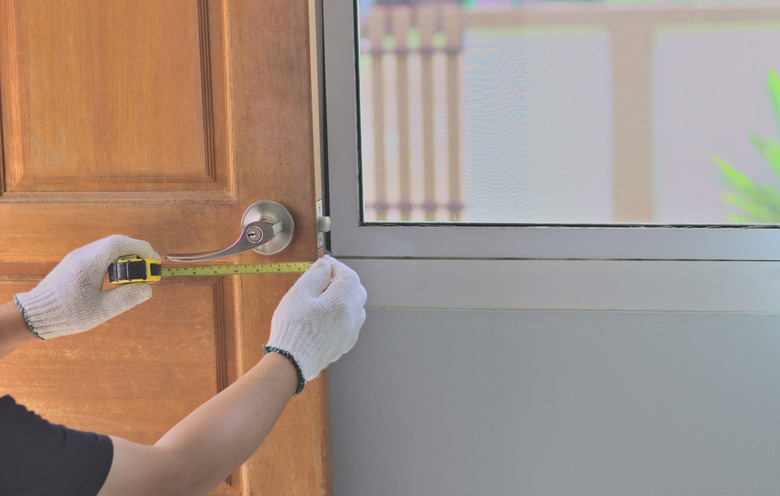How To Measure For A New Screen Door Or Storm Door
We may receive a commission on purchases made from links.
In addition to letting in some fresh air and sunlight, adding a screen door or a storm door can spruce up the entry to your home. There are many types of screen doors and storm doors that complement your home's look — and some models can even make the entry more energy efficient. However, before you click to purchase, it's important to take precise measurements for your new screen or storm door. Manufacturers produce these exterior doors in standard door sizes (and even custom sizes if you need), but the last thing you want is to have to carry a door back into the store to return it.
Storm Door vs. Screen Door
Storm Door vs. Screen Door
Many people use the terms "screen door" and "storm door" interchangeably, but there are actually differences. As the name implies, storm doors protect against bad weather. The parts that aren't glass are made of aluminum that is filled with insulation.
Storm doors usually contain insulated glass, and they fit the door opening tightly to cut down on drafts. They offer other benefits that a screen door can't, including beefed-up security and a range of attractive colors and configurations, including removable glass and screen panels.
Screen doors are not considered energy efficient, although with the primary entry door open, the screen door keeps out the bugs and lets in cool breezes and natural light. They are usually available in traditional designs and are made of either wood or vinyl. The screens used on screen doors are usually permanent, although they can be repaired if necessary.
A screen door is casual and airy, while a storm door has a more formal appearance. Either can be installed at the front or back entrance to a house. If you were buying both types, you would typically place the storm door at the front entry and the screen door at the back.
Storm Door vs. Screen Door Installation Techniques
Storm Door vs. Screen Door Installation Techniques
Both a storm door and a screen door are mounted in the same area (in front of the main exterior door), but the installation techniques differ. Both are attached to the exterior trim, sometimes called brickmould, around the door opening.
Screen doors are attached to the face of the trim — the section facing out — with the hinges visible on the door and the trim itself. There is usually a gap between the door and the door frame of about 1/8 to 1/4 inch around the top, bottom, and sides of the door. (The door manufacturer will specify the correct size of the gap.)
Storm doors are secured to the inside section of the trim — the part facing the other side of the entry. The doors are mounted on a metal frame the runs along both sides and the top of the door opening. This helps ensure a tight fit in the opening.
Most storm and screen doors give you the option of making the door either right- or left-handed, which is the way the door swings. If you are outside facing the door and the door handle is on your right, the door is right-handed. Check with the manufacturer to be sure.
Storm doors usually include locksets and handles. You will need to drill holes in the door and the trim during installation, although most manufacturers include a template for locating the lockset. Screen doors may come with a pull handle that you screw to the door, or you may have to buy it separately. They usually don't have locksets.
Storm and Screen Door Measuring Tips
Storm and Screen Door Measuring Tips
When you're about to purchase a storm or screen door, you will be taking multiple measurements to find both the width and the height of the opening. Don't be surprised if the measurements are not all the same. It's very common because of the house settling over time.
So, how do you reconcile this? If you will be installing a storm door, you will rely on the smallest measurement for the width and height. The installation kits for these doors will include shims to help the door fit tightly in the opening. You'll find that what the manufacturer calls a 36-inch-wide door can actually accommodate a range of openings. For example, one major manufacturer's 36-inch door can fill openings from 35 3/4 inches to 36 3/8 inches.
If you are installing a screen door, you will use the largest measurement to purchase the door. Screen doors are made of wood or vinyl, and they can be trimmed to size using a circular saw and fine-tooth blade. Check with the manufacturer to determine how much can safely be trimmed. The limit can range from 1/4 inch up to 1 inch per side.
Things Needed
How to Measure for a Screen Door or Storm Door
1. Determine the Condition of the Door Trim and Measure
Because the door will be mounted to the trim around the door opening, the casing must be in good condition and firmly attached to the house.
- Measure the outside face of the trim.
- Measure the inside face of the trim. Most manufacturers require about 3/4 to 1 inch of flat area on both surfaces.
- Measure the depth of the door jamb, the frame to which the primary door is attached. Most people place the new door's handle on the same side as the primary door. Measure to make sure there is enough room for both. If there isn't, you can install the handle on the other side.
2. Measure the Width of the Door Opening
You will need to take multiple measurements to determine the width of your opening. What may have been a perfectly square and plumb opening at one time may have shifted slightly.
- Measure the width of the door opening about 6 inches down from the top of the opening, from the inside face of the trim on one side to the inside face on the other side.
- Take a second width measurement in the middle of the opening.
- Finish by placing the tape about 6 inches from the bottom of the opening and taking a third width measurement.
- Note the smallest measurement if you plan on installing an aluminum storm door. Note the largest measurement if you will be installing a wood or vinyl screen door.
3. Measure the Height of the Door Opening
Again, it is best to take more than one measurement. When taking height measurements, you will be measuring from the overhead casing down to the threshold. If the threshold slopes, you may have to measure the height where the front of the door will hit the threshold as well as where the back of the door will land and then trim the bottom of the door if possible. Alternatively, you can measure where the back of the door will land for a simplified installation. Consult the door manufacturer for specifics.
- Take the first measurement midway between the left side of the opening and the middle of the opening.
- Measure from the midpoint between the center of the opening and the right side of the opening.
- Note the smallest measurement for storm doors and the largest for wooden screen doors.



